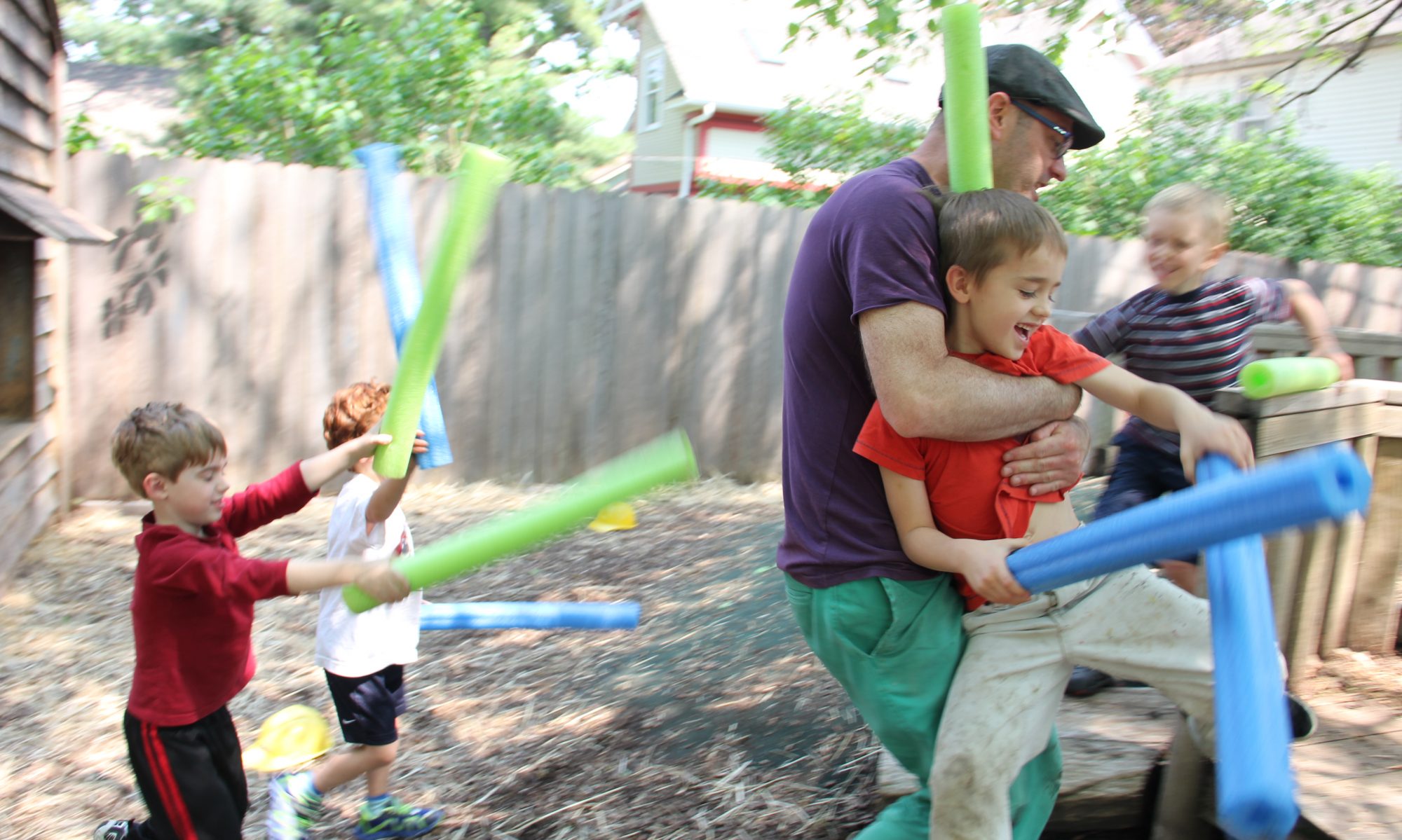I have been thinking quite a bit about how to teach the concept of consent to young children. It is often said that morality is better caught than taught and I think that is apropos in this case. But that does not mean the teachers aren’t actively teaching consent. Rather, I think the focus is on creating a culture of consent in the classroom. Then the teacher can find times for short “direct instruction” to help instill what consent is.
In the classroom it means that adults and children have a few basic agreements. I would use the term “guidelines” in a classroom setting. The agreement is essentially that everyone has a right to their own body and that when mistakes happen, we can fix those mistakes. Here is the wording I have used in my preschool classroom and my colleague used in her toddler room:
• We take care of each other
• We solve problems together
Together these allow for wording to use over and over. If Lena (a toddler) tackles someone who clearly does not want to play rough, the teacher can say, “Remember, we take care of each other. You have to ask if they want to be knocked down.”
If the other child cries or gets mad, the teacher goes to the next guideline. “Oh no we have a problem, but we solve problems together.” Then the teacher can follow the steps of conflict resolution.
The teacher will be repeating the two guidelines over and over, but toddlers do start to internalize them. The teacher can also post the guidelines using different color for each so the toddlers can keep track of them. The teacher can point at the words when they say them. Many of the toddlers will start pointing at them as well.
The first guideline is a little more obvious. If each child has a right to decide what happens to their body then they must respect others bodies. I don’t use the word respect for young children because it doesn’t seem concrete enough. Most young children know the phrase being “taken care of” so it seems to work better. I have seen toddlers use this terminology after it is used.
The second one might not be so obvious: solving problems together. When I started using guidelines, I thought We Take Care of Each Other encompassed this one. But in the classroom I saw how useful it was. Some children feel shame when they hurt someone, intentionally or not. Other children at this age honestly don’t realize they caused someone to get hurt (not yet understanding cause and effect).
I found myself referring to this guideline all the time. It had an unexpected effect. It helped restore peace in the classroom. Children learned that the teachers were not interested in blaming children, but rather solving the problem and moving on. Many toddlers and preschoolers will step in to help when there is this focus on repair. It doesn’t matter if an individual was even part of the conflict, each child can be part of the solution. I think this aspect of consent is often missing in our culture’s recent discussions on the topic.
If children mostly see adults searching for someone to blame and “take responsibility”, many may try to simply avoid getting caught or deny any responsibility if they are caught. Instead, children should step up and try to solve the problem (whether they are the one responsible or not). I think this is where the important learning can happen. Because consent is not simply an agreement between two people about what is allowed to happen. It is a community deciding who has a voice.
